Stock market today: Nasdaq closes above 23,000 for first time as tech rebounds
Introduction & Market Context
Beasley Broadcast Group Inc (NASDAQ:BBGI) shares jumped 9.93% in premarket trading to $4.71 following the release of its Q2 2025 earnings presentation on August 12, 2025. The radio broadcaster continues to navigate a challenging advertising environment, with total revenue declining year-over-year while its digital segment shows promising growth.
The company, which reaches nearly 19 million listeners weekly across 12 U.S. markets, is accelerating its transformation from a traditional radio broadcaster to an integrated audio and digital media company. This strategic pivot comes as industry forecasts show digital radio revenue growing while core local revenue faces continued pressure.
Quarterly Performance Highlights
Beasley reported total net revenue of $53.0 million for Q2 2025, representing a 12.3% decrease from $60.4 million in Q2 2024. This decline exceeded the company’s previous forecast of a 10% drop mentioned during its Q1 earnings call. Despite the overall revenue challenges, the digital segment demonstrated resilience.
As shown in the following revenue breakdown by segment:
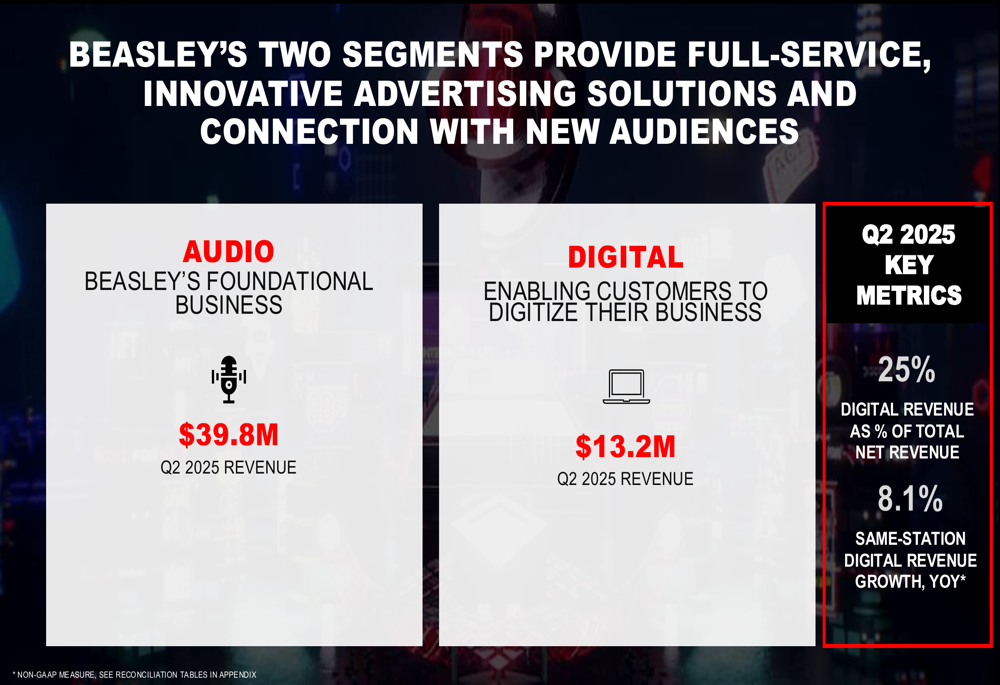
The company’s digital segment generated $13.2 million in revenue, accounting for 25% of total net revenue, while the audio segment contributed $39.8 million. Notably, same-station digital revenue grew by 8.1% year-over-year, highlighting the success of Beasley’s digital initiatives amid broader market headwinds.
Beasley’s revenue sources remain diversified across client types and categories, with national advertisers representing the largest portion of revenue:
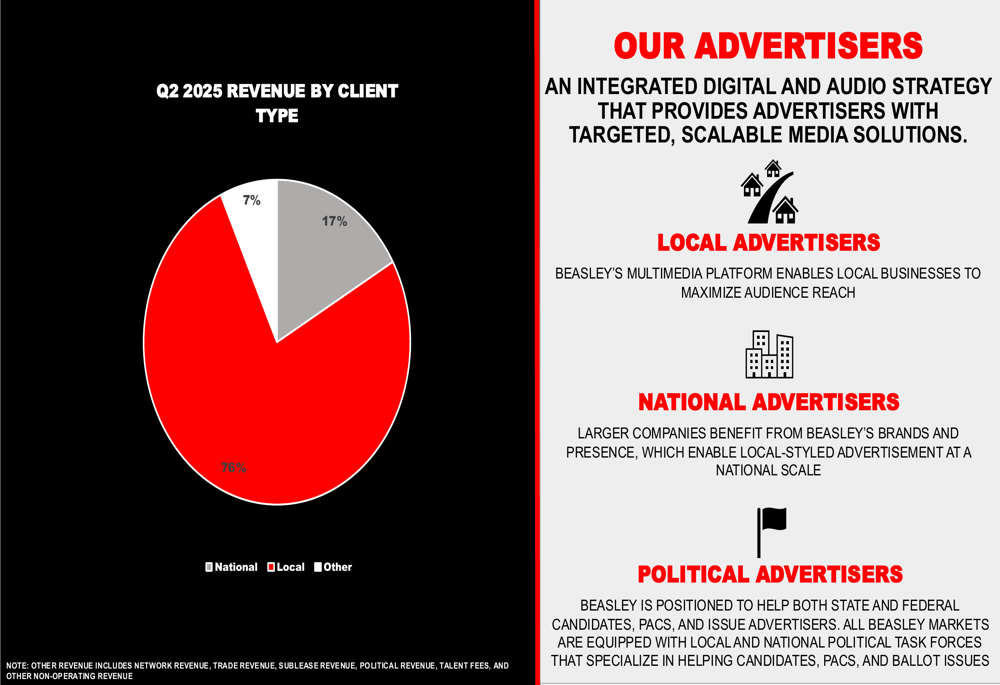
Within revenue categories, consumer services led with 33% of total revenue, followed by entertainment at 30%:
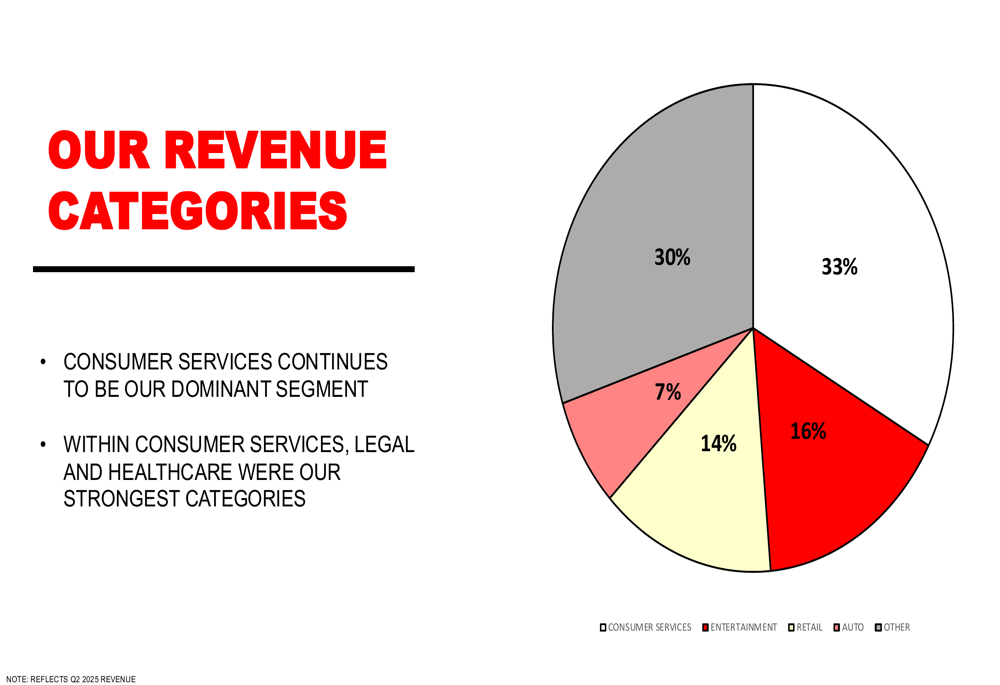
Digital Transformation Strategy
Beasley continues to emphasize its digital transformation as a cornerstone of its long-term growth strategy. The company’s approach combines the broad reach of traditional radio with the precision targeting capabilities of digital platforms.
The company’s audience reach spans multiple platforms, demonstrating its evolution beyond traditional radio:
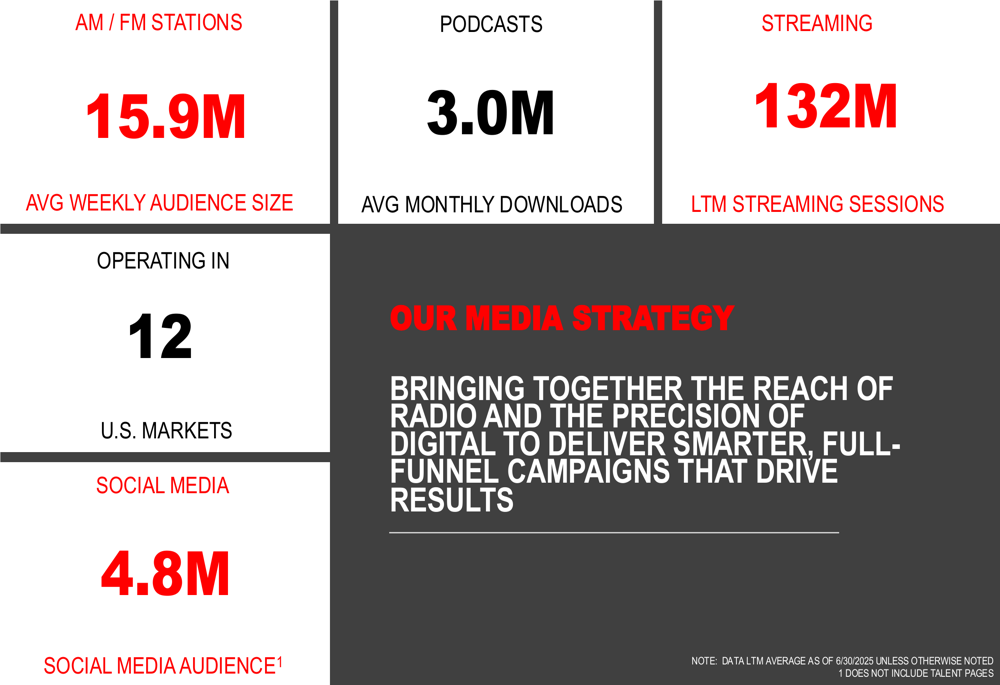
Beasley’s digital revenue has shown consistent growth over time, with a balanced mix between owned and operated (O&O) properties and third-party platforms (TPP):
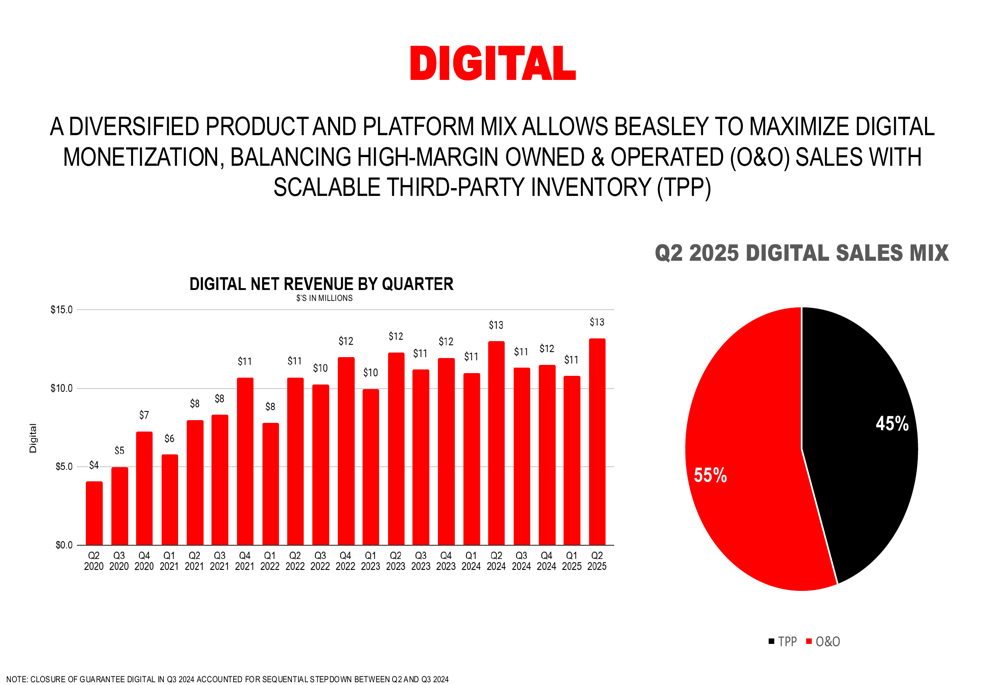
The company’s geographic footprint remains strong in key markets, with Beasley ranking in the top three station groups in seven out of ten of its markets and maintaining exclusive rights with five professional sports teams:
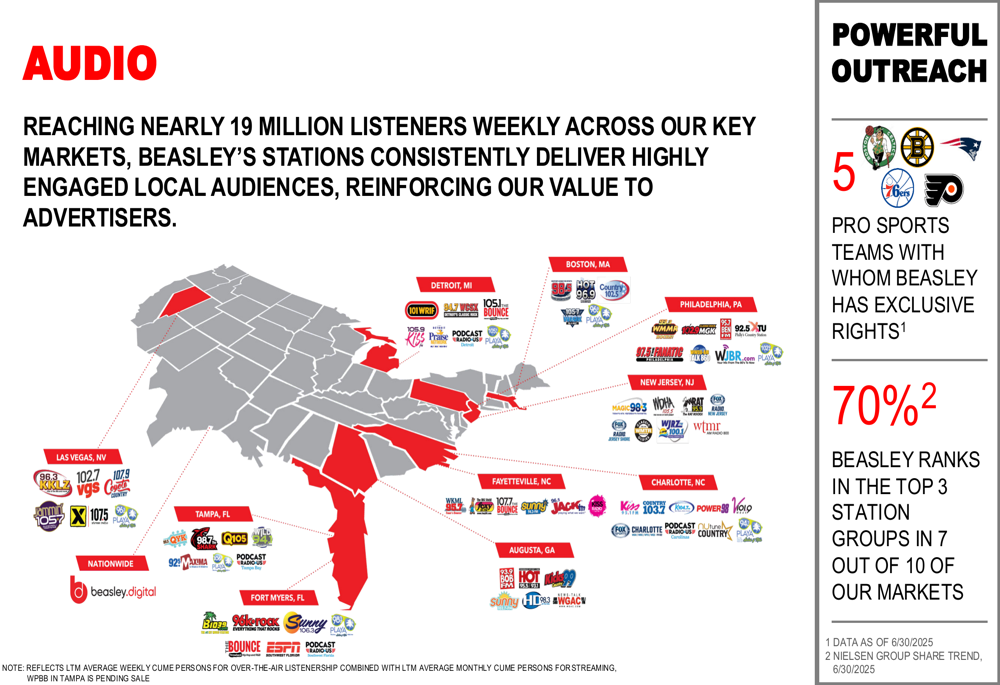
Financial Analysis
Beasley’s financial performance reflects the challenges of its ongoing transformation amid revenue pressures. The company reported Station Operating Income (SOI) of $8.2 million for Q2 2025, down from $11.1 million in the same period last year. Adjusted EBITDA declined to $4.7 million from $8.8 million, with margins compressing from 14.5% to 8.9%.
The following chart illustrates the company’s historical performance trends:
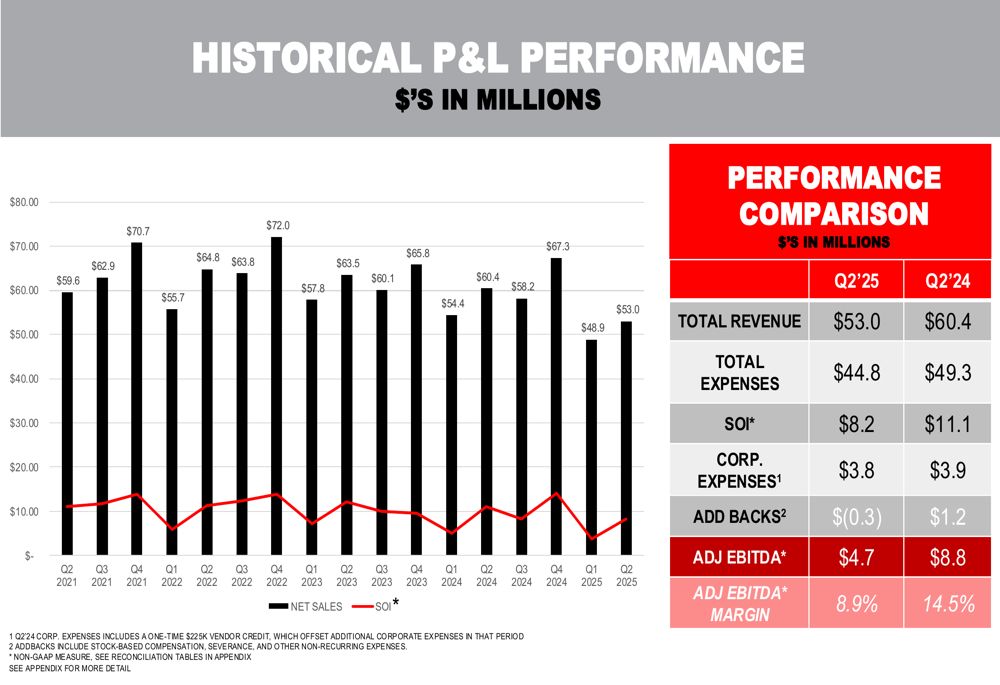
Despite revenue challenges, Beasley maintained its focus on cost management, with total expenses decreasing to $44.8 million from $49.3 million in Q2 2024. However, the reduction in expenses was not sufficient to offset the revenue decline, resulting in margin compression.
Key financial metrics for the quarter included:
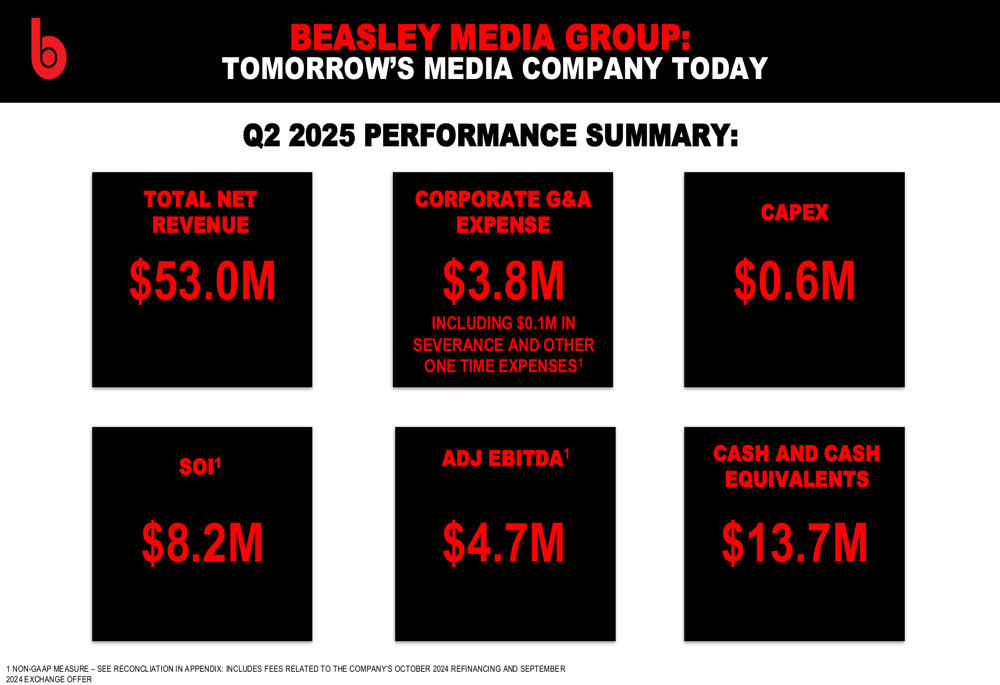
The company’s balance sheet showed $13.7 million in cash and cash equivalents as of June 30, 2025, virtually unchanged from $13.8 million at the end of 2024. Principal outstanding debt stood at $218.5 million, slightly reduced from $220.0 million at year-end 2024:
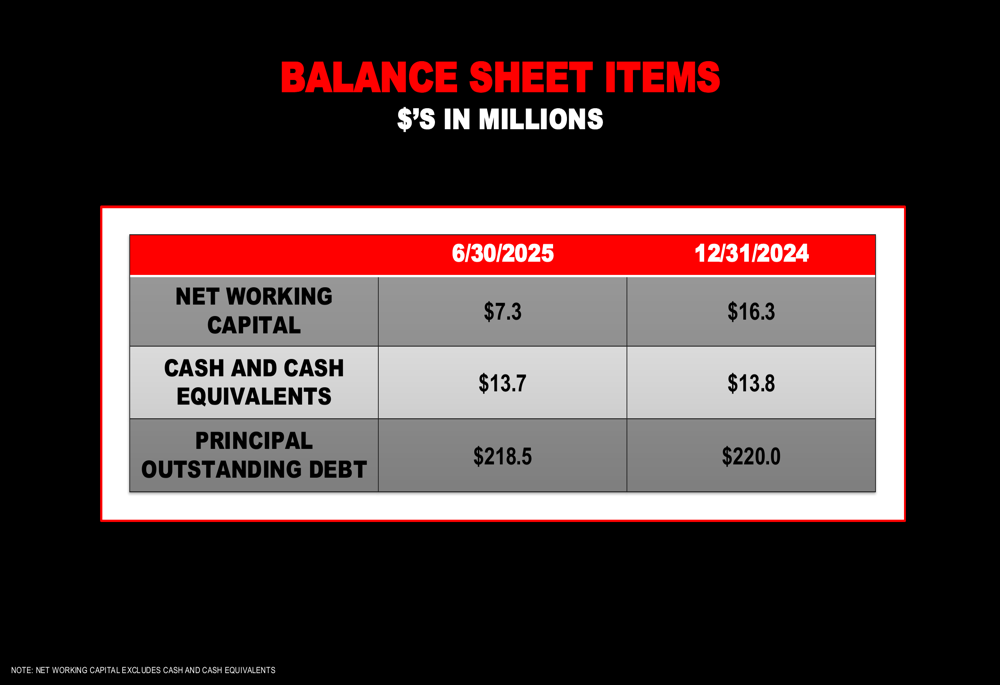
Forward-Looking Statements
Beasley’s presentation emphasized its continued focus on operational efficiency and expansion of digital capabilities beyond 2025. The company highlighted that its multimedia platform enables it to deliver "full-funnel campaigns" that combine radio’s local reach with digital’s precision targeting.
According to industry projections included in the presentation, digital radio revenue is expected to grow from $6.32 billion in 2022 to $8.74 billion by 2028, while core local revenue is forecasted to decline from $11.04 billion to $9.68 billion over the same period. Beasley is positioning itself to capitalize on this shift by building a scalable digital business that integrates with its audio brands.
The company claims its combined radio and digital campaigns deliver 30% higher intent to purchase compared to single-channel approaches, suggesting potential for improved advertiser outcomes as it continues its transformation.
While Beasley faces near-term revenue challenges, its growing digital segment and strategic positioning in key markets provide potential pathways for recovery as the company navigates the evolving media landscape.
Full presentation:
This article was generated with the support of AI and reviewed by an editor. For more information see our T&C.
